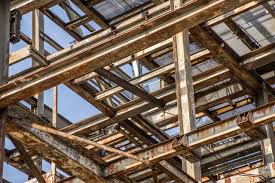okt. . 11, 2024 19:01 Back to list
One-Sided Retaining Wall Formwork Manufacturing Facilities Overview and Innovations
Understanding One-Side Retaining Wall Shuttering Factories
In the construction industry, retaining walls serve a critical purpose by holding back soil and preventing erosion. Among various methods of constructing these walls, one-side retaining walls have gained popularity due to their efficiency and effectiveness in specific applications. Specifically, the shuttering used in the building of these walls is pivotal, highlighting the crucial role played by one-side retaining wall shuttering factories.
What is One-Side Retaining Wall Shuttering?
One-side retaining wall shuttering involves the use of formwork that supports the concrete mixture while it sets. Unlike traditional two-sided shuttering, one-side shuttering is employed when the wall is bordered by naturally stable ground on one side. This method reduces material costs and construction time while simplifying the actual pouring and finishing process. The design is particularly beneficial in spaces with limited access where a full formwork erection would be cumbersome.
The Manufacturing Process
Retaining wall shuttering factories are specialized facilities that design and manufacture these forms from various materials, including steel, plywood, and aluminum. The manufacturing process generally involves the following steps
1. Design and Planning Engineers and architects create designs tailored to project specifications. The design must consider factors such as weight capacity, environmental conditions, and concrete characteristics. Computer-aided design (CAD) software is often employed to ensure precision and functionality.
2. Material Selection Factories source quality materials that can withstand the pressing weight of concrete and the harsh conditions of construction sites. The choice of material affects the longevity and durability of the shuttering.
3. Fabrication The selected materials are cut, shaped, and assembled into formworks according to the designs. This process involves welding metals, cutting plywood, and sometimes applying protective coatings to enhance durability.
4. Quality Control Rigorous inspection protocols are in place to ensure that each piece of shuttering meets industry standards and client specifications. This is crucial to guarantee safety and performance during the pouring and curing of concrete.
5. Delivery and Installation Support After fabrication, the shuttering is delivered to construction sites. Many manufacturers provide installation support to ensure that the forms are set up correctly.
one side retaining wall shuttering factories

Advantages of One-Side Retaining Wall Shuttering
The advantages of using one-side shuttering are numerous
- Cost-Effective By eliminating the need for a second side of shuttering, construction costs significantly decrease. This allows developers to allocate resources more efficiently.
- Reduced Labor One-side shuttering is less labor-intensive, resulting in lower labor costs and faster project completion times.
- Space-Efficient Ideal for tight sites, one-side shuttering requires less space for setup, making it easier to work in confined areas.
- Versatility These shuttering systems can be adapted for various heights and thicknesses, making them suitable for different retaining wall applications.
Challenges and Considerations
While one-side shuttering offers several benefits, it also presents challenges. Proper design and engineering are essential to ensure stability, especially when creating tall walls. Factors such as soil type, moisture, and load conditions must be thoroughly assessed to prevent structural failures. Additionally, workers must be trained in the unique installation techniques associated with this method to ensure safety and effectiveness.
Conclusion
Overall, one-side retaining wall shuttering factories play a vital role in modern construction practices. By providing innovative solutions tailored to specific project needs, these factories contribute to the efficiency, cost-effectiveness, and safety of retaining wall construction. As construction methods evolve, the importance of quality manufacturing and adaptability in shuttering systems cannot be overstated. Embracing these advancements ensures that infrastructure development can meet contemporary demands while laying a strong foundation for future growth.
-
Premium H20 Timber Beams | Durable Structural Solutions
NewsAug.05,2025
-
Premium Wall Formwork Solutions for Modern Construction
NewsAug.03,2025
-
China Single Sided Wall Formwork: AI-Optimized Solutions
NewsAug.02,2025
-
Premium Timber Beam H20 | Strong & Durable Construction
NewsJul.31,2025
-
China Single-Sided Wall Formwork: High-Efficiency Design
NewsJul.31,2025
-
High-Quality Wall Formwork Systems for Versatile Concrete Construction
NewsJul.30,2025